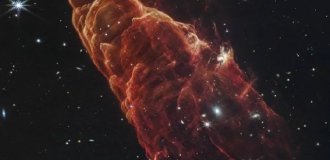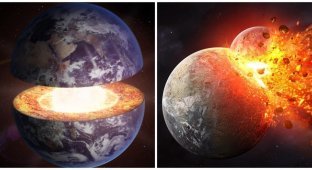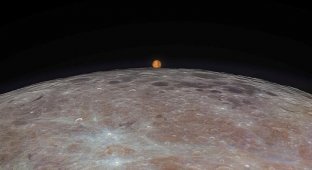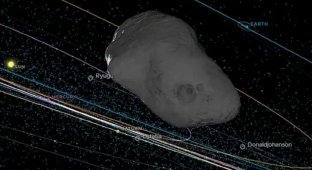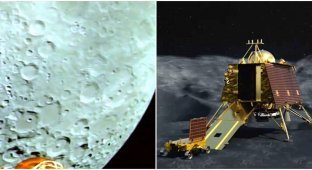Scientists have found confirmation of the giant collision hypothesis (5 photos + 2 videos)
The giant impact hypothesis, or impact model for the formation of the Moon, is a common theory according to which the Moon formed after a planet the size of Mars crashed into the young Earth. The remains of this planet formed the Moon and were partially buried inside the Earth. New data from NASA's Gravity Recovery and Interior Laboratory (GRAIL) spacecraft provides support for this theory. 
A new study of metal ore deep within the Moon offers evidence that Earth's natural satellite was formed by an ancient planet that crashed into Earth long ago.
As a result of this long-standing interplanetary collision, which scientists believe occurred about 4.5 billion years ago, a planet the size of Mars, named Theia (after one of the Titan sisters in ancient Greek mythology, the mother of Helios, Eos and Selene), collided with the Earth and scattered into fragments of hot lava.
Some of Theia's planetary remains appear to be buried in dense and massive clumps deep beneath the African and Pacific tectonic plates. However, where the rest of Theia went after the disaster remained unknown.
But now new data from NASA's Gravity Recovery and Interior Laboratory (GRAIL) spacecraft has discovered large deposits of titanium-iron ore deep beneath the lunar surface, suggesting that the remnants of Theia did form Earth's Moon.
Planetary geophysicist Adrien Broquet of the German Aerospace Center in Berlin called the results of NASA's GRAIL study nothing less than "fascinating."
His team's new work, published in April of this year in the journal Nature Geoscience, focuses on gravitational anomalies deep below the lunar surface: dense, heavy accumulations of matter detected by the GRAIL spacecraft's sensors.
“Analyzing these variations in the Moon's gravitational field allowed us to look beneath the surface and see what was underneath,” Brocke says.
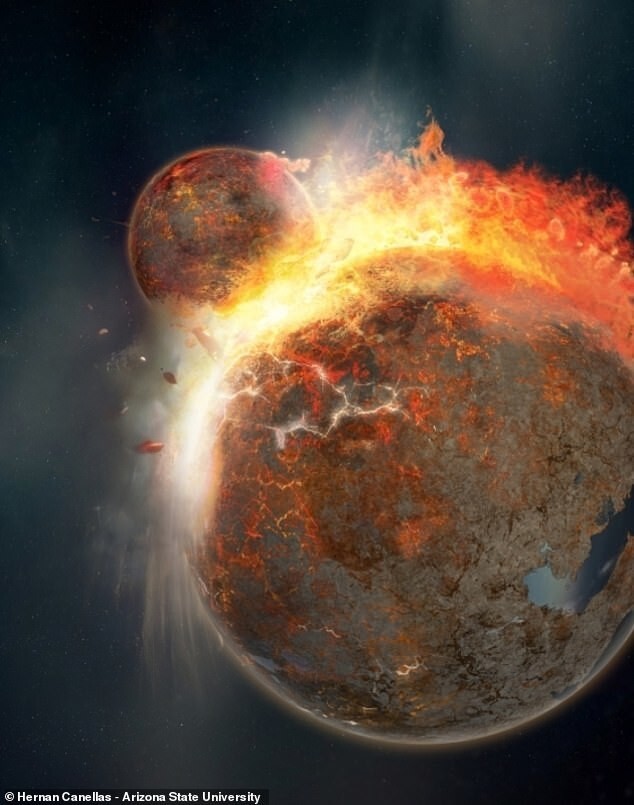
Beneath the lunar crust, in the region between the crust and core called the mantle, GRAIL discovered two dense regions consistent with the titanium and iron "ilmenite" deposits that would exist if the giant impact hypothesis were true.
After Theia's collision with the Earth and after fragments of this protoplanet were buried deep under the Earth's crust, molten lava pools of heavy titanium and iron on the surface of the Moon began to sink deeper into its core, pushing lighter rocks upward.
"Our moon has literally turned inside out," says Brocke's co-author, Jeff Andrews-Hanna, a geophysicist at the University of Arizona's Lunar and Planetary Laboratory.
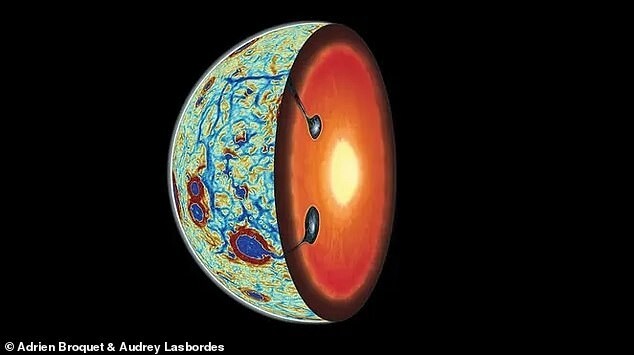
Computer models by their colleague Nan Zhang of Peking University in Beijing became the basis for the theory that titanium-rich material exists deep within the Moon as a result of its Thayan origin.
“When we saw the predictions of this model,” says Andrews-Hanna, “it was like a light bulb went on. We see exactly the same picture when we look at subtle changes in the Moon's gravitational field, revealing a network of dense material hiding beneath the crust."

On Earth, two similarly dense and unusual regions at the base of our planet's mantle, known as Large Low Velocity Provinces (LLVPs), also support the theory that an interplanetary collision created our Moon.
One LLVP region is located under the African tectonic plate and the other is located under the Pacific tectonic plate, as confirmed by seismic equipment similar to that used to detect earthquakes.
Their existence was discovered when geologists noticed that seismic waves slowed down sharply at a depth of 2,900 km in just these two regions of the Earth.
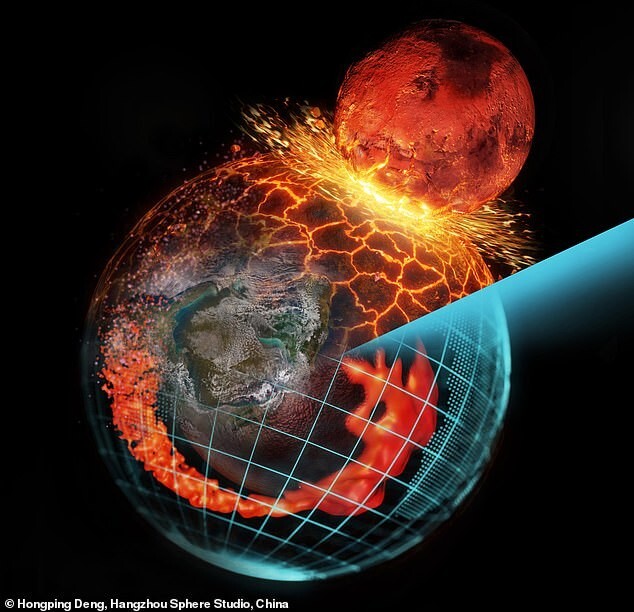
Scientists believe the material in these LLVPs is 2 to 3.5 percent denser than Earth's surrounding mantle.
Last year, researchers at Caltech floated the idea that these LLVPs may have formed from small amounts of Theyan material that fell into ancient Earth's lower mantle.
To confirm this idea, they asked Professor Hongping Deng of the Shanghai Astronomical Observatory to study it using his pioneering methods in computational fluid dynamics.
Through a series of simulations, Professor Deng found that after the moon-forming impact, a significant amount of Theyan material - about two percent of the Earth's mass - would have fallen into the lower mantle of the ancient planet Earth.
"Through precise analysis of a wider range of rock samples, combined with more accurate giant impact models and models of Earth evolution, we can infer the material composition and orbital dynamics of the primordial Earth, 'Gaia' and 'Theia,'" said Deng's co-author Qian Yuan. , a geophysicist at CalTech who also worked on the project.
Deng and Yuan's team published their research in the journal Nature late last year.
Brocke said he hopes future NASA missions to the Moon, such as those planned under the Artemis program, will be able to take similar seismic measurements: first-of-its-kind seismic data from the Moon to better support the Theia impact theory.
“Future missions, for example with a seismic network, will allow us to better study the geometry of these structures,” says the researcher.



